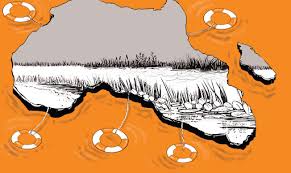
On February 2, Kenya joined the global community in marking World Wetlands Day.
This year’s theme, ‘Protecting Wetlands for Our Common Future’, resonated deeply with our national priorities as we grapple with increasing environmental challenges, including the degradation of vital wetland ecosystems.
It served as a timely reminder that protecting these natural treasures is essential for the survival of our communities, economy, and biodiversity.
This year’s celebrations coincided with preparations for the 15th Meeting of the Conference of the Contracting Parties to the Ramsar Convention on Wetlands, which will take place in July at Victoria Falls, Zimbabwe.
COP15 is a landmark event for global wetland conservation. Delegates from 172 countries, including Kenya, will convene to discuss strategies for reversing wetland loss and restoring these vital areas’ ecosystems.
While forests have rightly been the cornerstone of many conservation efforts, we must broaden our focus to include wetlands and other ecosystems equally vital to survival.
This year’s theme challenges us to recognise wetlands as critical natural assets that should be integral to our national restoration policies and actions.
Covering approximately three to four per cent of Kenya’s land area, wetlands are far more than mere water bodies; they are lifelines for millions of Kenyans.
They filter water, regulate floods, store carbon and provide habitats for diverse wildlife. Wetlands such as the River Sabaki Estuary, Yala Swamp and Tana River Delta are essential to Kenya’s economy, biodiversity and climate resilience.
They also sustain local economies through agriculture, fishing and tourism while providing critical services such as flood regulation and water purification.
Despite their immense value, wetlands are often overlooked in conservation and restoration strategies, facing mounting threats from encroachment, pollution and climate change. This puts local communities at risk of food and water insecurity.
However, there is hope. Kenya has made significant progress in wetland conservation in recent years. For instance, two land use plans for the Tana and Yala deltas have been developed collaboratively to balance development and conservation needs in the wetlands.
Now in their implementation stages, these plans prioritise communities’ needs, including settlement and livelihood considerations, while ensuring equitable land resource allocation for investors and communities.
Most importantly, they safeguard the wetlands’ unique biodiversity by embracing strong conservation ethics.
This evidence-based approach highlights the importance of conserving the wetlands to maintain their vital environmental services, which support the economy, biodiversity and livelihoods.
Another notable achievement is the development of the River Sabaki Estuary Management Plan. This plan emphasises habitat restoration for migratory birds and fish breeding while promoting ecotourism opportunities.
It ensures that local communities benefit without compromising this critical ecosystem. Such integrated approaches should serve as models for other consultative wetland conservation efforts nationwide.
Aligning wetland restoration with Kenya’s
development goals can unlock numerous benefits,
including enhanced water security, climate adaptation
and improved livelihoods.









